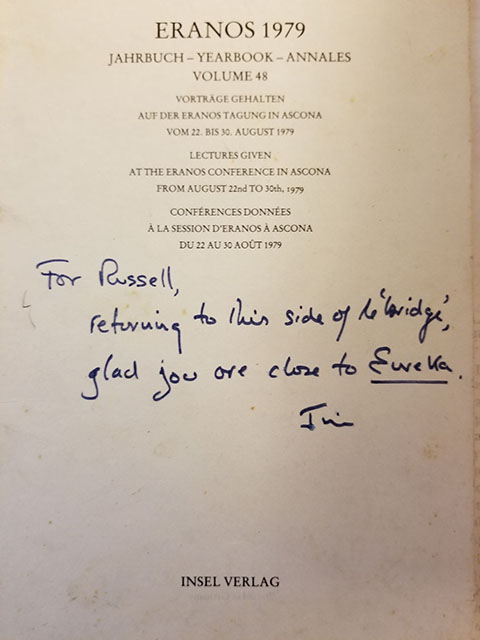Remembering Jim
My first encounter with the work of James Hillman was in 1962. I was completing my Master’s Degree in human psychophysiology and had stumbled across his book, Emotion: A Comprehensive Phenomenology of Theories and Their Meanings for Therapy. First published in 1960, it was Hillman's doctoral dissertation at the University of Zurich. I was familiar with the literature on emotion in various disciplines, but I had never encountered the voice I heard in these pages. What was it? I couldn’t quite get it, but I did know I wanted to see more work by this author. The next work I found was his essay in Harvest,on “Friends and Enemies,” in 1962, and the next was “On Betrayal,” in Spring, in 1965. By this time, I had studied a good bit of Jung, and entered analysis in 1964. Through the 60s and early 70s, I eagerly devoured Jung’s work as well as Hillman’s and taught both at university and in the analyst training program. It was in 1975, that I encountered Hillman’s Re-Visioning Psychology. It was clear to me that keeping Jung and Hillman close together would be a feat. By this time I had become a Jungian Analyst, and had begun a friendship with Jim. He accepted my essay, ”Cancer in Myth and Dream,” for publication in Spring in 1977, and he suggested that Spring publish a collection of my essays which was published in 1983 (Words As Eggs). In 1978, I became director of analyst training in Los Angeles, a position he had held in Zurich. Then came his book, The Dream and the Underworld, published in 1979, and it caused the most argumentative time between us. It is a profound work as is much of Hillman’s work to be sure. I delighted in the way his mind worked and his quick silvered tongue. But this book caused me to take issue with him. The main issue in my mind was that the relativity of “seeing through” everything left no solid ground for ethical action in the world--a feature of Jung’s psychology that to me was paramount and essential.” I told him that he left no bridge to the upper world. Our differing views went on for some time. Then early in 1982, Jim sent me a copy of his Eranos lecture, “The Thought of the Heart.” I include a picture of this. On it he had written, “For Russell, returning to this side of the ‘bridge,’ glad you are close to Eureka.” I had moved from Los Angeles to a redwood forest just north of Eureka, California. To get clear on Hillman’s reference to bridge take note that the first chapter in The Dream and the Underworld is entitled “Bridge.” In sending “Thought of the Heart,” Hillman is letting me know that he was“returning to this side of the bridge.” His reference to Eureka was not just to the place. I sorely miss him, but his spirit lives on.
